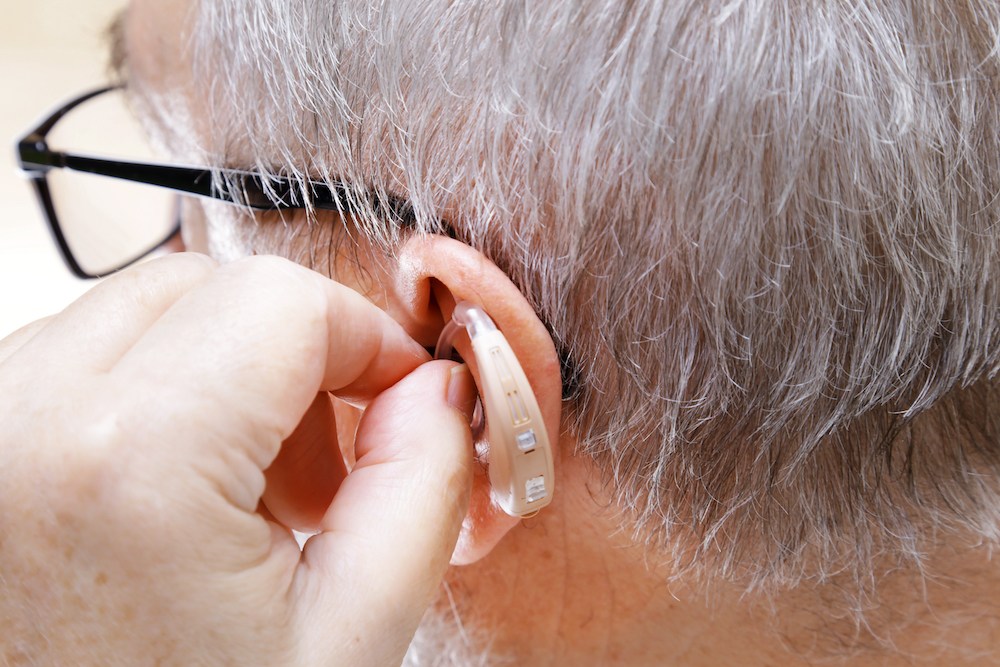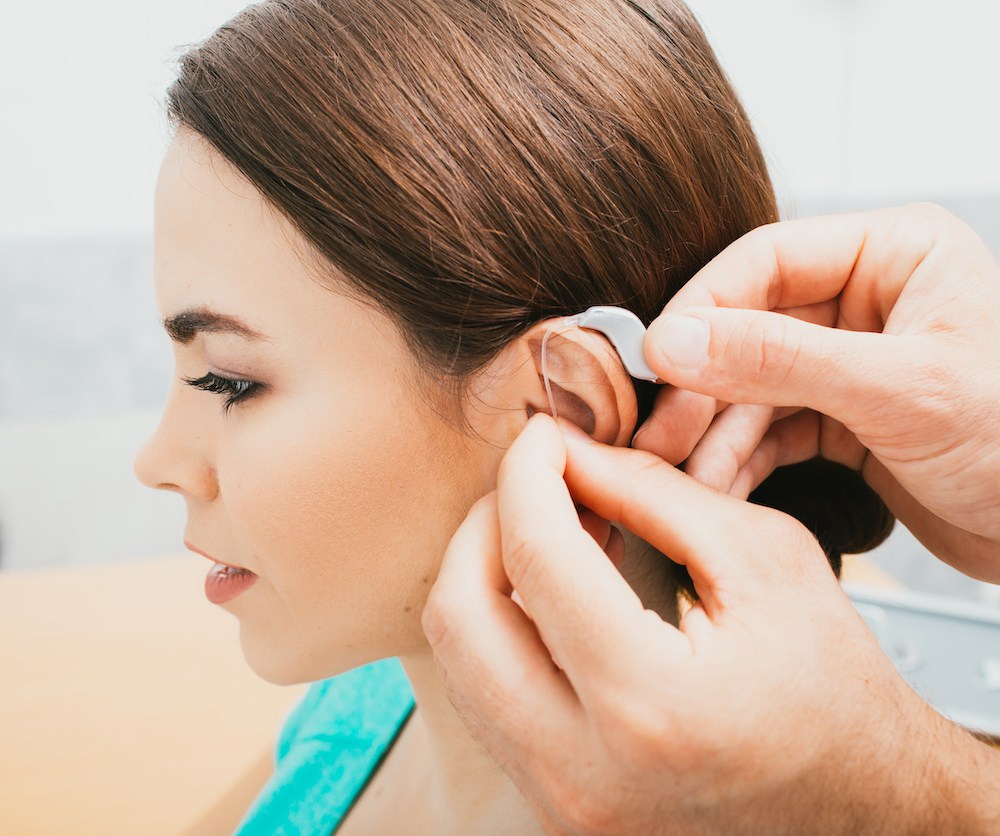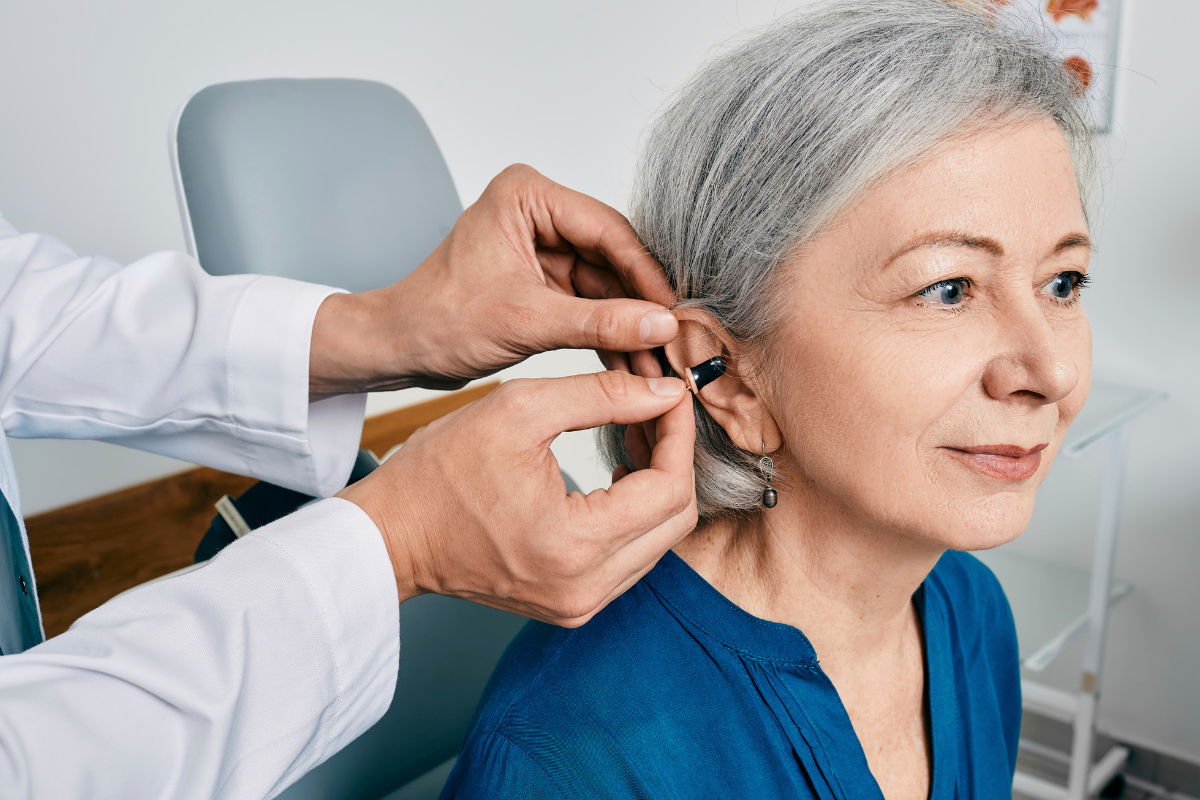The Impact of 3D Printing on Hearing Aid Manufacturing
Technology has changed how we work, communicate and access entertainment
We Moved! Our new address is 12133 W Bell Rd, STE 201.

By: admin | February 24, 2024
Hearing aids are an effective solution for managing hearing loss. Like any other device, they can sometimes encounter issues that affect their performance. If you’re having difficulties with your hearing aids, don’t worry – many common problems have simple solutions. This article will help you overcome typical issues and continue enjoying the benefits of better hearing. Understanding these simple fixes can save you time and stress, ensuring your journey towards improved auditory health remains smooth.
Before we get into troubleshooting, it’s important to understand how these remarkable devices work. Hearing aids are more than just tiny sound amplifiers. They are sophisticated pieces of technology designed to selectively increase the volume of sounds you want to hear.
Hearing aids capture sounds from your environment, process these sounds to match your specific hearing loss profile and then deliver the amplified sound into your ears. This process happens in real-time and constantly adjusts to match the changing sound environment around you. Understanding this functionality can help you appreciate the complexity and value of these small but mighty devices.
Recognizing when your hearing aids might be experiencing issues is crucial. Even the most advanced devices can occasionally encounter complications that may impact their performance.
Changes in sound quality, like distortion or feedback, or inconsistent performance could be signs of potential problems. Similarly, physical discomfort or a loose fit might indicate that your hearing aid needs adjustment. Recognizing these signs early can help ensure your hearing aid continues to work effectively for you.
Common hearing aid problems can arise, impacting the effectiveness and comfort of the device. These issues may include feedback or whistling noises, weak or distorted sound, discomfort or irritation in the ear and difficulty with battery insertion or replacement. It’s essential to address these problems promptly to maintain optimal hearing health.
For behind-the-ear (BTE) hearing aids, common issues may include feedback due to poor fit or earwax buildup, discomfort caused by the tubing or earmold and moisture-related problems affecting the electronic components. In-the-ear (ITE) hearing aids may encounter issues like feedback caused by improper placement or ear canal blockage, discomfort due to poor fit or earwax accumulation, and sound distortion caused by moisture or debris. In-the-canal (ITC) hearing aids may face similar problems, including feedback, discomfort and sound distortion, often related to improper fit or ear canal conditions. Regular maintenance and prompt attention to these issues are essential for optimal hearing aid performance.
Ensuring a hearing aid fits properly is crucial for both comfort and performance. A well-fitted hearing aid not only enhances comfort but also optimizes the device’s effectiveness in improving hearing. When a hearing aid is improperly fitted, it can lead to various issues that compromise its functionality and the wearer’s overall experience.
One common problem associated with an ill-fitting hearing aid is discomfort. If the device doesn’t sit snugly in the ear canal or behind the ear, it can cause irritation or soreness, making it unpleasant to wear for extended periods. Discomfort may result from pressure points or friction against the skin, particularly if the hearing aid is too tight or improperly positioned.
Additionally, an improperly fitted hearing aid may not deliver optimal sound quality. When the device doesn’t sit securely in the ear or fails to maintain a proper seal, it can allow external sounds to leak in, reducing the effectiveness of amplification. This can lead to difficulties in understanding speech, especially in noisy environments, and may result in the wearer feeling frustrated or dissatisfied with their hearing aid experience. Therefore, ensuring a proper fit is essential for maximizing comfort and ensuring the hearing aid performs optimally in various listening situations.
Feedback and whistling sounds from your hearing aids can be quite bothersome. These sounds are created when the amplified sound from your hearing aid leaks out of your ear and gets picked up by the device’s microphone, creating an annoying loop or ‘echo.’ This is often due to a poor fit or blockage in the ear canal.
To troubleshoot feedback and whistling sounds at home, there are several steps you can take. First, ensure that your hearing aids are properly inserted and seated in your ears according to the manufacturer’s instructions. Check for any visible signs of earwax buildup or debris that may be obstructing the device’s proper placement. If earwax is present, carefully clean the outer surfaces of your hearing aids and consult with your audiologist for guidance on safe earwax removal methods.
Additionally, adjusting the volume settings on your hearing aids may help mitigate feedback issues. Lowering the volume slightly can sometimes reduce the occurrence of whistling sounds while still providing adequate amplification for your hearing needs. Experiment with different volume levels to find the optimal balance between clarity and feedback suppression.
If feedback problems persist despite these troubleshooting efforts, it’s essential to schedule an appointment with your audiologist for further evaluation and adjustment of your hearing aids.
Another common issue you might face is low or inconsistent sound quality. This problem can be frustrating, especially when you’re trying to participate in conversations or enjoy your favorite music or TV shows. The good news is that there are steps you can take to improve this situation.
Inconsistent sound quality could be due to a variety of reasons like a low battery, blocked microphone or even incorrect settings. Regularly cleaning your hearing aids and changing the batteries as needed can help. If these steps don’t help, it might be time to consult with your audiologist who can check the device settings and make any necessary adjustments.
The batteries in your hearing aids play a critical role in their performance, and understanding how to manage them effectively can make a significant difference.
First, always ensure you have spare batteries on hand. This simple step can prevent unexpected power loss at inconvenient times. Second, when changing your hearing aid batteries, clean the battery compartment with a dry cloth to remove any dust or debris. This will help maintain optimal functionality. Finally, extreme temperatures can affect battery life – try to store your hearing aids in a cool, dry place when not in use.
Connectivity issues with hearing aids, especially those equipped with Bluetooth technology, can occur for various reasons, causing frustration for users. Common issues include difficulty pairing the hearing aids with external devices, intermittent audio dropout or poor sound quality during wireless streaming. These problems may stem from interference, device compatibility issues or software glitches.
To troubleshoot connectivity issues at home, start by ensuring that both the hearing aids and the connected device have sufficient battery power. Next, check for any physical obstructions or interference sources, like other electronic devices or Wi-Fi routers, that may disrupt the Bluetooth signal. Restarting both the hearing aids and the connected device can sometimes resolve temporary connectivity issues.
Additionally, updating the firmware or software of the hearing aids and the connected device to the latest versions may address compatibility issues and improve performance. Consult the owner manuals or manufacturer’s website for instructions on how to perform updates.
Keeping your hearing aids clean and well-maintained is key to warding off common issues and ensuring their optimal performance. With a few simple steps, you can keep your hearing aids in top shape and prolong their lifespan. Your audiologist can provide you with more detailed instructions, but the following list is a good place to start:
Knowing when to seek professional help for hearing aid issues is important. When simple troubleshooting steps don’t resolve the problem or if you notice persistent issues affecting your device’s performance, it may be time to consult with an audiologist.
Audiologists are trained in diagnosing and addressing a wide range of hearing aid problems. They can provide the necessary adjustments or repairs that will ensure your device continues working optimally. Don’t let unresolved issues hinder your path towards better auditory health; reach out for professional assistance when needed.
Recognizing when it’s time for a new hearing aid is crucial for maintaining optimal hearing health. One sign that indicates you may need a new hearing aid is if you frequently experience discomfort or irritation while wearing your current device. This discomfort could be due to changes in the fit of the hearing aid or outdated technology that no longer meets your needs. Additionally, if you find yourself constantly adjusting the volume or struggling to hear conversations even with your hearing aid, it may be a sign that your device is no longer providing adequate amplification.
Another indicator that it’s time to purchase a new hearing aid is if you notice a decline in sound quality or clarity. Over time, hearing aids can become worn out or damaged, resulting in diminished performance. If you find that sounds are muffled or distorted, or if you’re having difficulty understanding speech, it may be time to consider upgrading to a new device with improved technology.
Changes in your lifestyle or hearing needs may also necessitate a new hearing aid. For example, if you’ve recently started participating in activities or environments where background noise is more prevalent, you may require a hearing aid with advanced noise-cancellation features. Similarly, if your hearing loss has progressed since you last purchased a hearing aid, you may benefit from a device with more powerful amplification capabilities.
Ultimately, if you’re experiencing any of these signs or if you’re dissatisfied with the performance of your current hearing aid, it’s essential to schedule an appointment with your audiologist. They can assess your hearing needs, recommend appropriate options and help you find a new hearing aid that meets your requirements and preferences.
At Grusecki Audiology in Surprise, AZ, our team of professionals is ready to assist you with any concerns or questions about your hearing aids. We understand the importance of clear and comfortable hearing for your daily life. For more information or assistance on troubleshooting your hearing aid problems, please reach out at (623) 583-1737.
Tags: benefits of hearing aids, hearing aid repair, hearing aid styles

Technology has changed how we work, communicate and access entertainment
By: admin | June 20, 2025

Hearing loss can make it difficult to enjoy conversations, music, and
By: noboundariesmarketing | February 27, 2025

Remember those old hearing aids that simply made everything louder?
By: admin | February 18, 2025